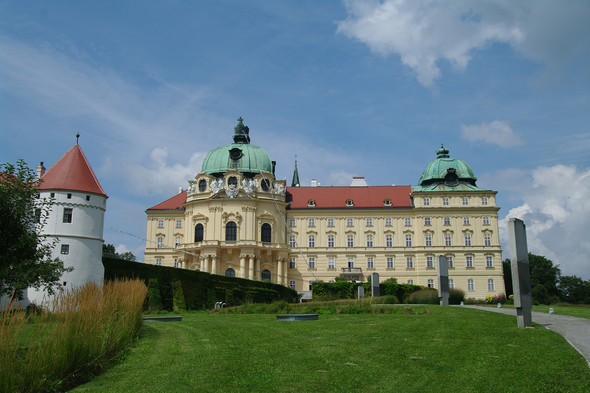Where in the world would you press your grapes in a former gothic church with a baroque ceiling? And produce your own barrels from wood grown in your own forest? In a 900-year-old monastery next to the Danube in Austria, of course, at the oldest wine estate in Austria.
Klosterneuburg, founded in 1114 by Margrave Leopold III in order to fulfil a vow, receives more than 100,000 visitors annually, who make the pilgrimage to visit this working monastery, where the ‘whole wine estate is really part of the monastery’.
It is an active monastery with 50 resident members of the religious order of St Leopold, with apple orchards and 108ha vineyards in four areas in Austria: around Klosterneuburg itself, Vienna, Gumpelskirchen and the Thermenregion.
The grapes are pressed in the press house, converted from a gothic church in 1722, producing a kind of ‘holy press wine’, communion wine, so to say, 900,000 bottles of it, three-quarters of which is consumed in Austria. The fermentation cellar, dating back to the Middle Ages, is the oldest part of the complex. A so-called cellar road, built by Emperor Charles VI, mother of Maria Theresa, was in fact a secret exit to enable him to leave from the inner courtyard and head for Vienna. It’s very practical nowadays too, allowing lorries to drive directly into the cellar and deliver supplies.
Curiously, the four-storey vaulted cellars, to a depth of 36m, were not dug out, but were constructed abutting the hill by an Italian architect specialising in fortress-building. The strong walls, consisting of 6m-thick outer walls, 1m space and 3m-thick inner walls, were not built to thwart attackers, rather to protect against Danube flood waters. A natural ventilation system is provided by a series of holes in the walls, and has worked for 300 years with little or no maintenance. When building a new warehouse, the Stift wanted to extend the existing ventilation system, but astonishingly, nobody was able to manage this and modern air-conditioning had to be installed instead.
The winery uses mainly Austrian oak, from their own forests, and their stated aim is to produce ‘wines of authentic character with a sense of place’. This they do with purposeful specialisation in autochthon varieties. Their range of wines includes Wiener Gemischter Satz, Gewürztraminer, Grüner Veltliner, Riesling and a Zierfandler-Rotgipfler blend. The reds originate from their vineyards in the Thermenregion, where Blaufränkisch, Zweigelt and St Laurent can be found.
The historic buildings house both state-of the-art technologies and the most extensive old wine archives in Austria, reaching back to 1956.






